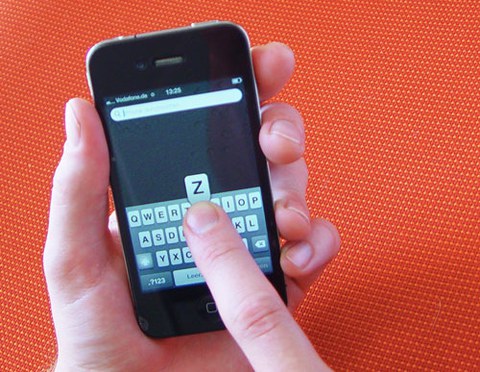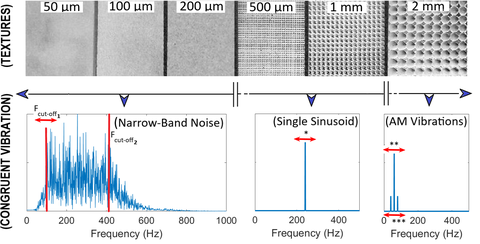Surface Haptics
Surface haptics is one of the main application areas of the haptic technology. The Chair of Acoustic and Haptic Engineering has long-term experience with electrodynamic, electrotactile, and vibrotactile haptic actuators. Using these actuators, several technological solutions have been developed for various surface haptic applications such as touch screens, multimedia systems, automotive control panels, and digital music interfaces. More detailed information about vibrotactile actuators is also explained in Aktorik section.
Surface haptics are becoming one of most popular topic since the physical buttons of various electronic devices in the market are replaced by virtual buttons and objects on display screens. Since only visual feedback is not sufficient to handle these new generation touch devices by the users, instant piezo-electric vibration is also generated to give users feedback when the buttons are touched on a touchscreen panel which has programmatically visualized buttons. In the last two decades, many researches have aimed to enhance decent tactile texture feedback on touch displays. Particularly, texture information is a multimodal event that is mainly perceived via tactile receptors and kinesthetic sensations. However, touch devices do not involve kinesthetic feedback and haptic feedback, therefore, is limited to tactile information. This makes rendering on touch displays a challenging event, but current technologies enable the reproduction of haptic textures on tactile surfaces. These technologies rely on replicating surface roughness or modulating friction force when a fingertip and a surface are in contact. There are basically two methods to modulate the friction force, which are ultrasonic vibration and electrovibration method. When electrovibration method is able to increase the friction coefficient by applying electrostatic attraction force, the ultrasonic vibration method is able to decrease it by creating air film between a finger and a surface. To simulate the induced vibrations on a haptic surface, apart from the friction modulation techniques, vibrotactile actuation can be used as well.
A relevant work, "Electrotactile Feedback for Handheld Devices with Touch Screen and Simulation of Roughness", has been published by the chair members in 2012. The image sourched from this paper illustrates that tactile information is presented to the fingertip of the user by transmitting small currents through electrodes. A special transconductance amplifier keeps the current stable, independent of moisture of the skin. An electrotactile display system consisting of two layers was implemented for the augmentation of tactile sensations. The first layer is an optically transparent electrode that is placed on the touch screen (i.e., the front side of a handheld device). The second electrode is an electrically conductive part or coating, which can be the metal rear panel of the device. Also, the image shown below is sourced from the phd dissertation of Prof. Ercan Altinsoy. His phd work is related with auditory-tactile simulation of objects in virtual environment.
Perceptual Substitution
Another research topic on texture reproduction, called "Perceptual Substitution-based Haptic Texture Rendering for Narrow-Band Reproduction", has been completed successfully by 2023. This work was found remarkable and original by the editorial members of IEEE Transaction of Haptics Journal, and published in March 2023, (click here to go to publication). This work offers a simple and plausible perceptual texture rendering model on mobile touch devices considering the limited capabilities of small haptic actuators in commercial mobile devices. It is because accurate reproduction of recorded texture vibration is often infeasible for widely available haptic reproduction systems on mobile devices. Usually, haptic actuators can only reproduce narrow-bandwidth vibration. With the exception of research setups, rendering strategies need to be developed, that utilize the limited capabilities of various actuator systems and tactile receptors while minimizing a negative impact on the perceived quality of reproduction. According to the set of experiments, the narrowest band-noise vibration with frequencies between 90 Hz to 400 Hz can be assigned to fine textures. Furthermore, amplitude-modulated vibrations are found to be more congruent to reproducing too coarse textures. To see the rendering parameters in detail, the research paper above can be examined.
Contact
Mitarbeiter
NameMr Ugur Alican Alma M.Sc.
Send encrypted email via the SecureMail portal (for TUD external users only).
Professur für Akustik und Haptik
Professur für Akustik und Haptik
Besucheradresse:
Barkhausenbau, Raum BAR 58 Helmholtzstraße 18
01062 Dresden
None


